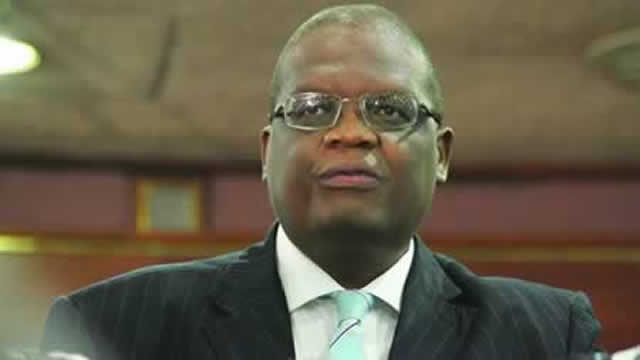Electronic transfers dominate business

From Golden Sibanda in Bulawayo
THE Reserve Bank of Zimbabwe says the ratio of cash to deposits in banks has come down from a high of 43,5 percent in 2009 to just under 5 percent, with electronic transfers picking up the huge difference as most retailers now get most of their payments by swipe card and banking App transfers.
RBZ deputy governor Kupukile Mlambo told delegates at a business conference at the Zimbabwe International Trade Fair yesterday that as Zimbabwe moves towards a near total electronic transfer market only 2 percent of banks’ liquid assets were in banknotes and coins.
However, the move towards a pure electronic economy is hampered by the fact that few rural retailers can cope outside a cash economy, with networks not always working, and many informal small traders probably need cash. Even ordinary urban people usually need a trickle of cash for combi fares and the like although mobile money could take a greater share of these transactions, as they do in Kenya.
The central bank deputy governor said, ordinarily, a developing country such as Zimbabwe required cash in circulation to constitute 15 percent of bank deposits. Zimbabwe has just over $200 million cash against $600 million to $1 billion the central bank believes is required to meet legitimate demands.
Dr Mlambo said that a significant proportion of bank deposits, about 34 percent, were RTGS balances, hence the insistence that the public should use more of plastic money and other forms of payments to transact than use cash.
While Zimbabwe uses a basket of foreign currencies, dominated by the US dollar, banknote shortages are exacerbated by high outflows as many use the fact that US dollar banknotes can be used to circumvent controls on the outflow of foreign currency simply by being carried over the border.
The RBZ deputy governor said Zimbabwe had faced serious shortage of foreign currency dating back to pre-independence, but the situation worsened when it dollarised in 2009 after inflation rendered its currency worthless.
“The cash to deposit ratio was at 43,5 percent in 2009, today, we are at 4,8 percent. We have moved from a situation where cash was close to half the deposits that were held by banks, so clearly we have a problem,” Dr Mlambo.
Dr Mlambo said while the amount of cash in circulation had reduced significantly, demand remained as high as it was in 2009.
“There is a lot of cash coming out of banks, but the cash is not going back to the banks,” he said.
This comes against the backdrop of huge amounts of cash that are said to be flowing out of the country through legal and illegal means including high import bill (external payments) and externalisation, which also entails locals. “A lot of cash is leaving the country illegally,” Dr Mlambo said. A total of $831 million was held by Zimbabweans in foreign banks in 2009 with the figure rising to marginally short of a billion dollars by the end of 2016, the RBZ said.
It is feared about $3 billion was siphoned out of the country between 2013 and 2016; a situation that has created chronic shortage of cash for a country that relies on a basket of foreign currencies which come in small amounts.
Low savings rates and shortages of foreign currency in Zimbabwe have created a situation where banks cannot optimally fund productive sectors, especially manufacturing, and prioritization of foreign currency..










Comments